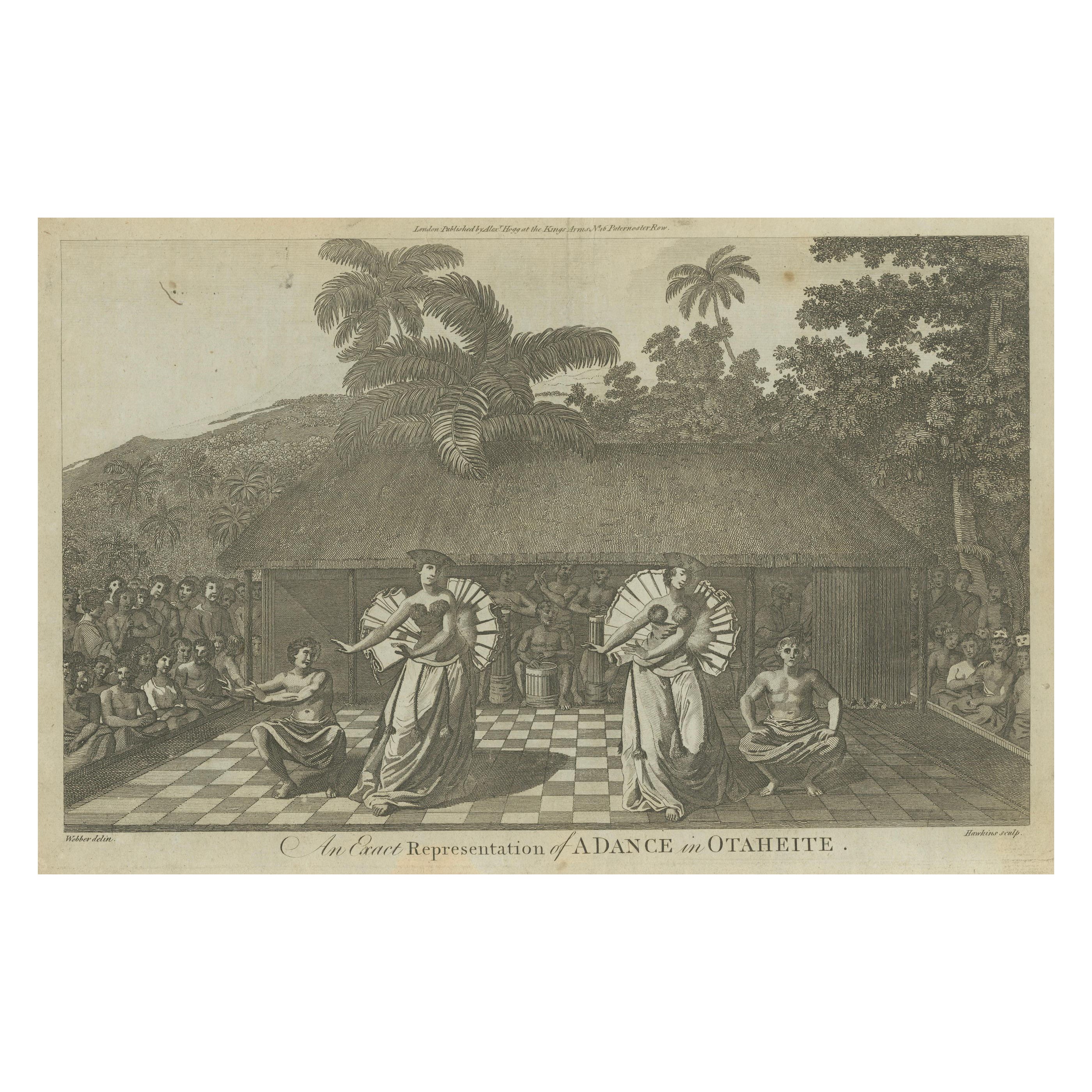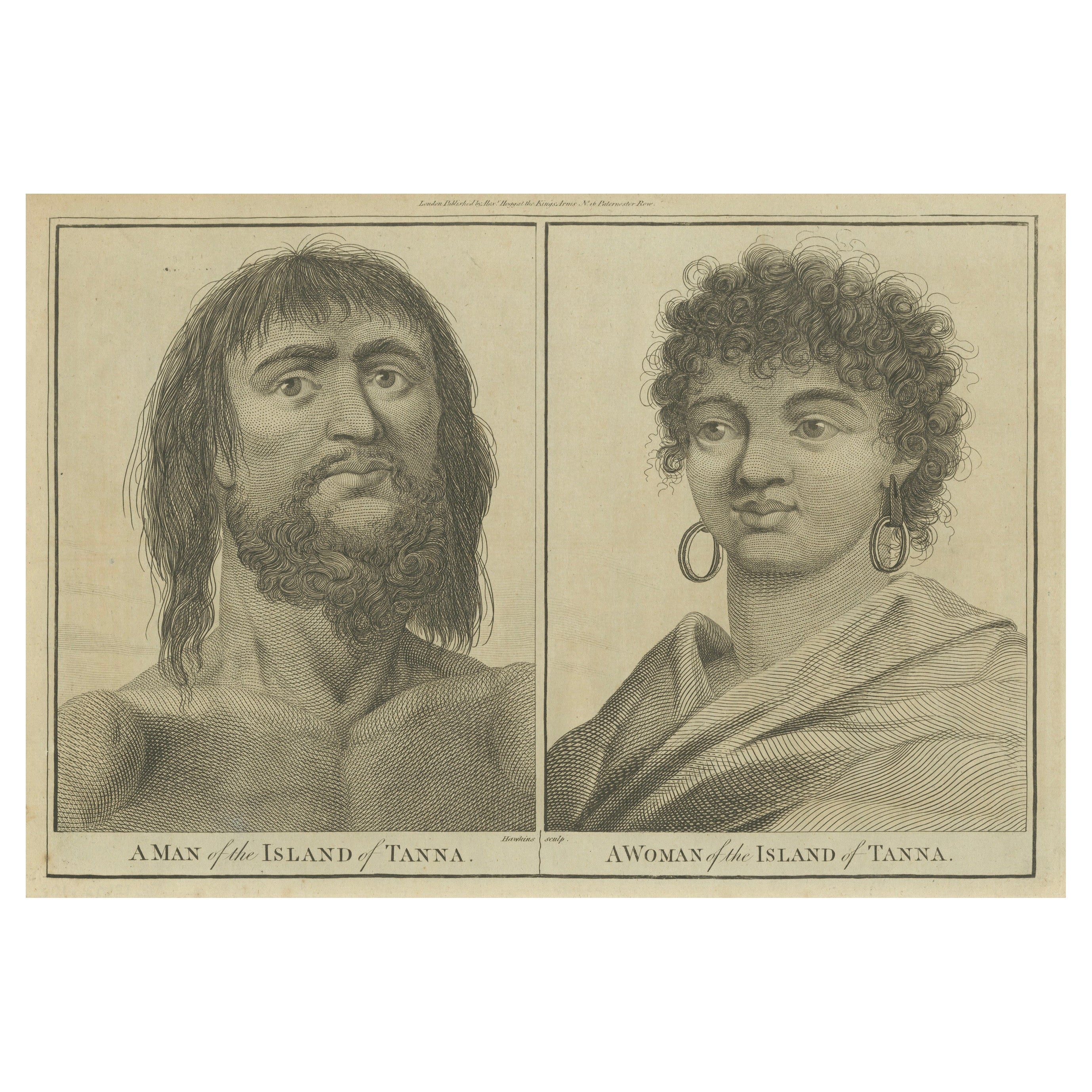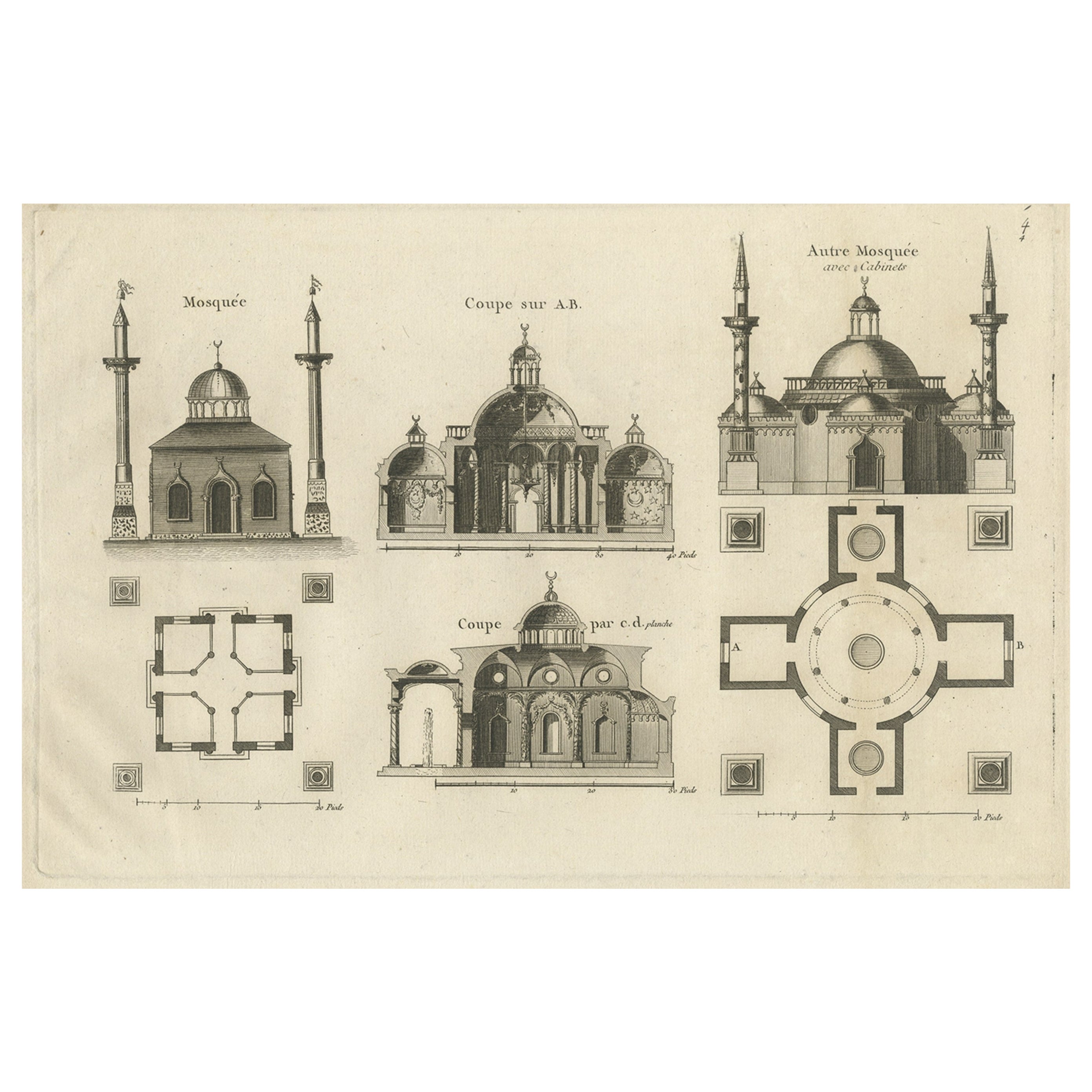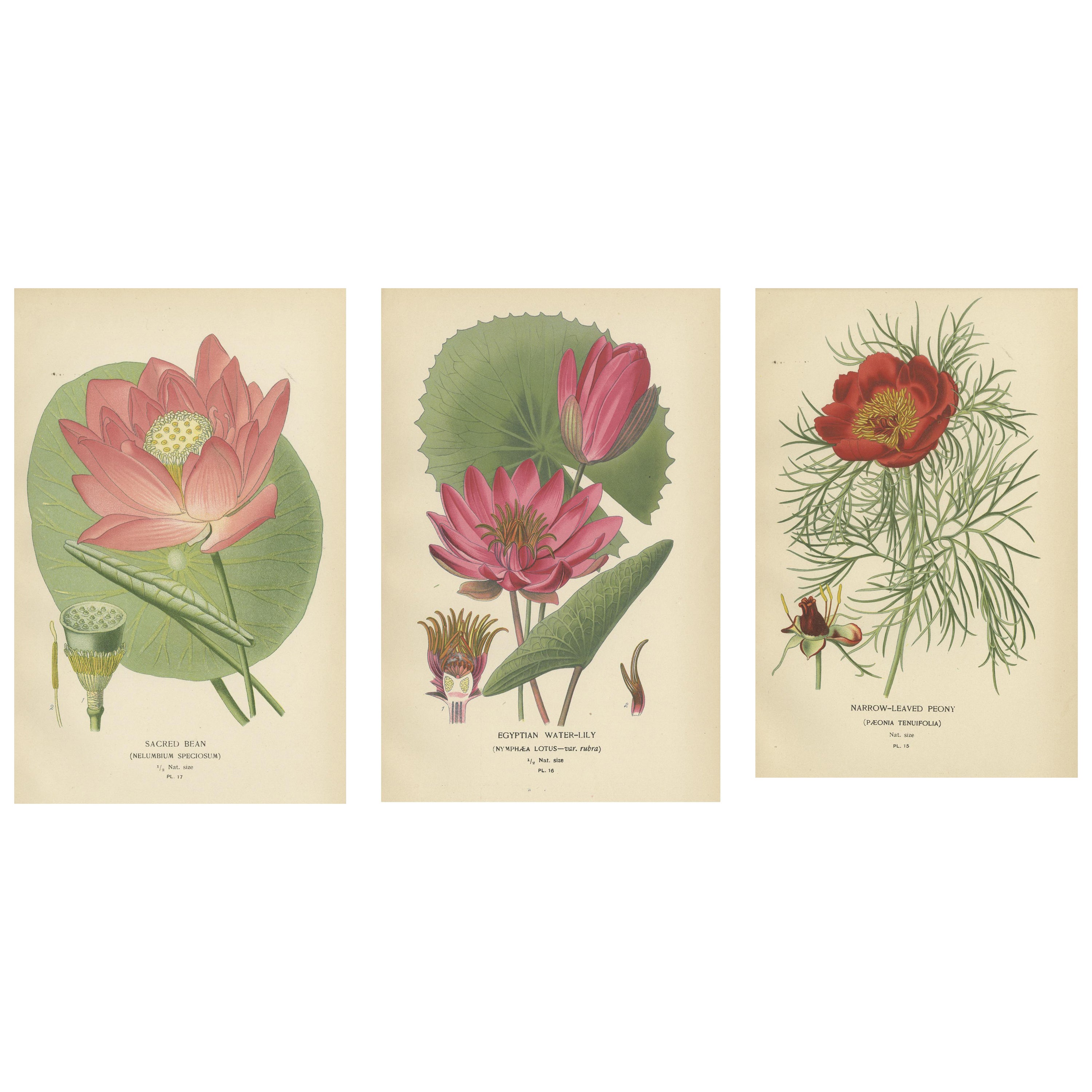Items Similar to Serenity at Isle of Pines: A Hodges Engraving of Isle of Youth, Cuba. Circa 1785
Want more images or videos?
Request additional images or videos from the seller
1 of 6
Serenity at Isle of Pines: A Hodges Engraving of Isle of Youth, Cuba. Circa 1785
About the Item
This image is an antique copper engraving with the title "A View in the Island of Pines," created by William Hodges. William Hodges was an English painter who is known for his work as the artist on board during Captain James Cook's second voyage, which took place from 1772 to 1775. Hodges created many sketches and paintings of the landscapes and peoples encountered during the voyage, which were later turned into engravings for Cook's published voyage accounts.
In this particular engraving, we see a tranquil and somewhat idyllic representation of a landscape that includes various types of pine trees, indicative of the location being the Isle of Pines (Isla de Pinos), which is now known as the Isle of Youth, Cuba. The perspective is from a slightly elevated vantage point, looking down upon a scene with detailed foliage in the foreground and more distant views of water and mountains.
The foreground features several pine trees, characterized by their straight trunks and conical shapes, suggesting they are possibly Norfolk Island pines or a similar species. The middle ground shows an expanse of water, possibly a bay, with more vegetation and trees dotting the shoreline. The background is composed of a mountain range, contributing to the depth and three-dimensional feel of the scene.
There is also a figure seated in the foreground, which provides a sense of scale and human presence within this vast landscape. The figure's inclusion is typical of the period, often meant to add a narrative element or to provide a sense of contemplation or solitude.
The sky is filled with streaked clouds, suggesting either the aftermath of a windy day or the onset of weather change, adding a dynamic element to the otherwise serene landscape.
As an engraving by William Hodges, this work would be considered an important historical record of the environments encountered during the Age of Discovery and would have contributed to European knowledge of distant lands during the 18th century. It combines both scientific interest and artistic merit, characteristic of Hodges' work.
- Dimensions:Height: 9.45 in (24 cm)Width: 14.97 in (38 cm)Depth: 0 in (0.02 mm)
- Materials and Techniques:Paper,Engraved
- Period:1780-1789
- Date of Manufacture:circa 1785
- Condition:Good condition, Aged paper with some soiling and foxing, mainly along the edges. Study the images carefully.
- Seller Location:Langweer, NL
- Reference Number:
About the Seller
5.0
Platinum Seller
These expertly vetted sellers are 1stDibs' most experienced sellers and are rated highest by our customers.
Established in 2009
1stDibs seller since 2017
1,922 sales on 1stDibs
Typical response time: <1 hour
- ShippingRetrieving quote...Ships From: Langweer, Netherlands
- Return PolicyA return for this item may be initiated within 14 days of delivery.
More From This SellerView All
- Original Antique Engraving of a Rock Formation, c.1785Located in Langweer, NLAntique print titled 'Le Rocher'. Copper engraving showing a rock formation. This print originates from 'Jardins Anglo-Chinois à la Mode' by Georg Louis le Rouge. Artists and Engravers: The work of Le Rouge is considered the most important engraved work concerning the history of European...Category
Antique 18th Century Prints
MaterialsPaper
- Celebration of Tahitian Culture: Traditional Dance at Otaheite, circa 1785Located in Langweer, NLAn antique engraving depicting a dance scene titled "An Exact Representation of a Dance in Otaheite," Otaheite being an archaic name for Tahiti in French Polynesia. This engraving would have been created as a part of a series to document the culture and life of the Tahitian people, likely observed by European explorers during one of the many voyages to the South Pacific in the 18th century. In the foreground, there are central figures engaged in a dance, wearing traditional Polynesian attire, which includes wraps around their waists and adornments that seem to represent status or a part of the dance costume. They are holding what appear to be fans, which may be part of the traditional dance. The dancers' poses suggest movement and a performance aspect to the scene. Behind the dancers, we can see a group of musicians providing the accompaniment, playing drums, which indicates the importance of music and rhythm in the dance. To the right, there is an audience of seated individuals, likely members of the community, watching the performance. The background of the scene includes thatched huts and a lush landscape with palm trees, depicting a typical village setting in Tahiti. The checkerboard pattern on the ground where the dance takes place is notable, as it adds a sense of structure to the scene. This image would have been intended for a European audience unfamiliar with Tahitian culture and would have served as a visual record of the encounters between European explorers and the peoples of the Pacific Islands. The engraving you've uploaded, titled "An Exact Representation of a Dance in Otaheite," is likely from a work documenting the voyages of Captain James Cook, given the style and subject matter. Captain Cook made three voyages to the Pacific Ocean during the 18th century, and his encounters with the peoples of the Pacific, including those of Tahiti (Otaheite), were extensively recorded and published. The engravings from Cook's voyages were made by artists who accompanied him, such as John Webber on his third voyage, or were based on sketches made by other crew members. These images were then published in the official accounts of the voyages. The most notable of these accounts is "A Voyage to the Pacific Ocean" undertaken during Cook's third voyage from 1776 to 1780, which was published in the years following his death in 1779. Another possible source for this engraving could be from the accounts of Joseph Banks. Banks was a naturalist who joined Cook on his first voyage (1768-1771) aboard the HMS Endeavour and was responsible for extensive collections and descriptions of Pacific cultures. His collections and later works also included illustrations and engravings of the scenes and peoples encountered. Given that the engraving is labeled as "London Published as the Act directs by Alexr. Hogg at the Kings Arms...Category
Antique 1780s Prints
MaterialsPaper
- Copper Engraving of Various Pavilion Decorations of Romainville, ca.1785Located in Langweer, NLAntique print titled 'Différentes Décorations de Romainville de l'Ordonnance (..)'. Copper engraving showing various pavilion decorations. This print originates from 'Jardins Ang...Category
Antique 1780s Prints
MaterialsPaper
- Diversity of Tanna: Portraits of a Man and Woman from Vanuatu’s Isle, ca.1785Located in Langweer, NLThe engraving features two individual portraits side by side, labeled as inhabitants of the island of Tanna, which is part of Vanuatu in the South Pacific. On the left is "A MAN of the Island of TANNA." He is depicted with a serious, almost stern expression, looking slightly to the side. His facial features are marked by a prominent beard and mustache, and his hair appears long and wavy. This detailed portrayal suggests an effort to capture the unique physical characteristics and possibly the demeanor of the man. On the right is "A WOMAN of the Island of TANNA." She is shown in a three-quarter view with a gentle expression, looking directly at the viewer. Her hair is styled in tight curls, she wears large hoop earrings, and her clothing drapes softly over her shoulders, indicating a level of adornment and style. The portraits likely aimed to depict the natural appearance and attire of the people from Tanna as accurately as possible for European audiences of the time. These works often sought to provide a detailed record of the diverse cultures encountered during exploration voyages. The style of the engraving and the reference to Captain Cook's voyages suggest that it comes from the late 18th century, likely in the period following Cook's final voyage, which ended in 1779. The engravings of Pacific peoples associated with Cook's voyages were often published in the various accounts that proliferated after his travels, as there was a keen interest in the newly contacted peoples of the Pacific. The text on the engraving says it was "Accurately Engraved for Anderson's Large Folio Edition of the Whole of Capt'n. Cook's Voyages &c. Complete." This indicates that the engraving was made for a specific publication by Anderson, compiling Captain Cook's voyages. George William Anderson is known for his compilation titled "A New, Authentic, and Complete Collection of Voyages Round the World," which was published initially in the 1780s. This collection often included large folio engravings such as this one. Given this information, we can reasonably estimate that this engraving would have been published sometime in the 1780s. However, without specific publication data, it is not possible to provide an exact year. Such details would typically be found in a library catalog...Category
Antique 1780s Prints
MaterialsPaper
- Antique Copper Engraving Showing Two Mosques, ca.1785Located in Langweer, NLAntique print titled 'Mosquée - Autre Mosquée'. Copper engraving showing two mosques. This print originates from 'Jardins Anglo-Chinois à la Mode' by Georg Louis le Rouge. Ar...Category
Antique 1780s Religious Items
MaterialsPaper
- Original Antique Engraving of the Cave of Saint-Leu in France, C.1785Located in Langweer, NLAntique print titled 'Vue étant vers la droitte dans l'intérieur de la Grotte de St. Leu'. Copper engraving showing the cave, park and garden of Saint-Leu. This print originates from...Category
Antique 18th Century Prints
MaterialsPaper
You May Also Like
- Sarah Porter, "Queen of the Touters at Tunbridge Wells" Engraving, circa 1770Located in Lowestoft, GBAfter Vander Smissen 'Mrs Sarah Porter, Queen of the Touters at Tunbridge Wells', a mezzotint, engraved by William Pether circa 1770, glazed in ebonised, ...Category
Antique Late 18th Century English Prints
MaterialsGlass, Pine, Paper
- 19C Aquatint Engraving of the Quay at WaterfordLocated in Dallas, TXPresenting a lovely 19C Aquatint Engraving of the Quay at Waterford in Waterford city in Ireland. This engraving has been hand embellished with aquatint color(s) and is from Ireland circa 1820-40. It features a scene of the Quay or Port of Waterford from circa 1820. We are basing this upon the attire of the figures in the engraving and the tall ships. It features Reginald’s Tower (still located at the Waterford Quay to this day). Georgian Quay buildings, a number of moored tall ships and row boats, barrels, horses and carts, women and British soldiers. The engraving was professionally reframed and matted in Dallas in the 1980’s and the rear of the frame says that it was “Museum Mounted and Matted”. The frame has a lovely Grecian pattern around the front. If you are Irish...Category
Antique Mid-19th Century Irish George III Prints
MaterialsPaper
- Selection of Modern Engravings, circa 1938Located in Atlanta, GASelection of Modern Engravings, from a limited edition published in the December 1938 issue of the ground breaking modern art magazine XXe. They are framed in clean lined black lacquered wood gallery frames. They are priced at $550 each. From left to right, top to bottom, they are: 1) Henri Matisse 2) Henri Laurens 3) Juan Miro...Category
Vintage 1930s French Mid-Century Modern Prints
MaterialsPaper
- Sloth Engraving Circa 1758Located in Dallas, TXAn antique engraving of a monkey called Sloth dated 1758 signed Edward Delin Anno. In a newer eglomise and guided wood frame with fruits, leaves and insects.Category
Antique 1750s English Prints
MaterialsPaper
- Set of Twelve Colored Engravings of the Defeat of the Spanish Armada by J. PineLocated in Essex, MABy John Pine considered the foremost heraldic and decorative engraver of his generation. Depicting the defeat of the Spanish by the English Fleet in 1588. These are after a set of tapestries that hung in the House of Commons...Category
Antique 1740s English Prints
MaterialsPaper
- Jepthas "Distress at Meeting His Daughter" Colored Copper EngravingLocated in Kastrup, DKJephthah's Distress at meeting his Daughter. Painted by H. Singelton. Engraved by W. Bond Colored copper engraving in contemporary Empire mahogany frame...Category
Antique Early 19th Century English Empire Prints
MaterialsGlass, Mahogany, Paper





